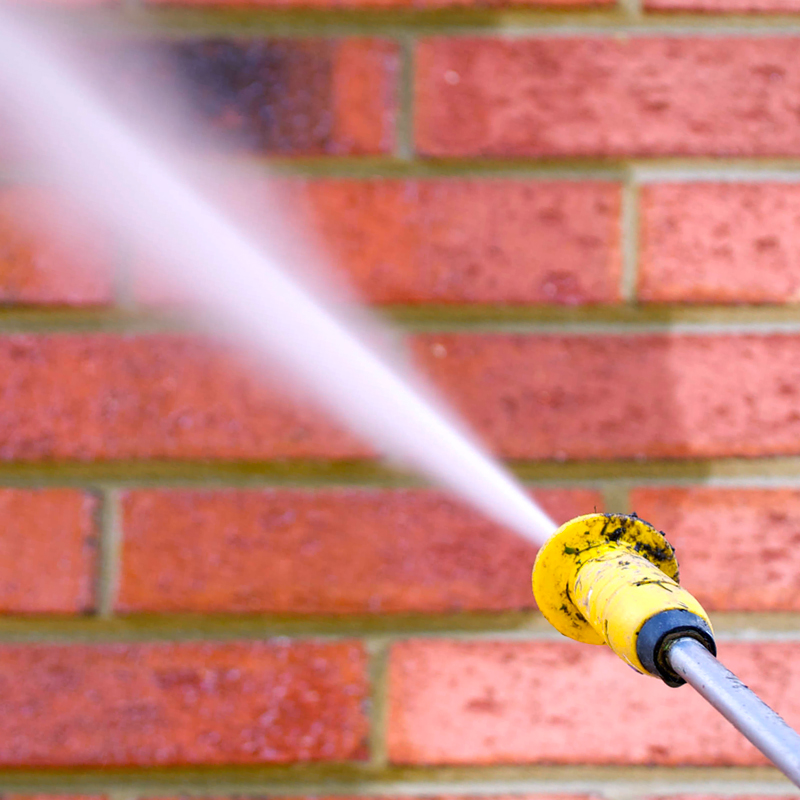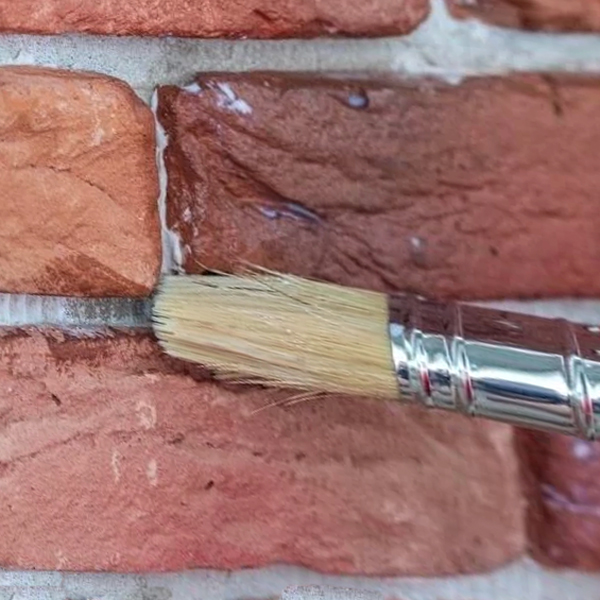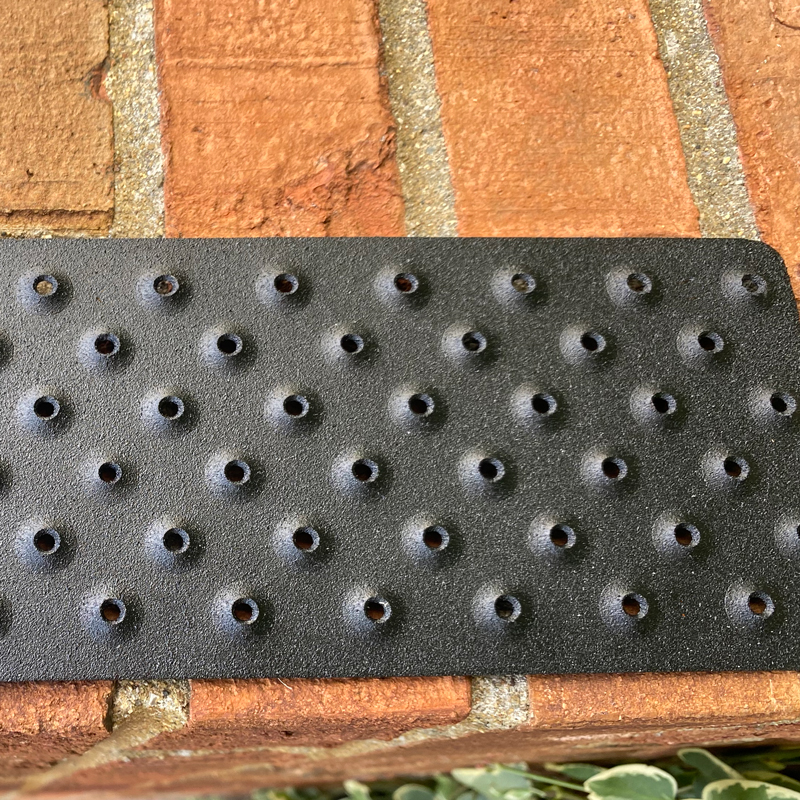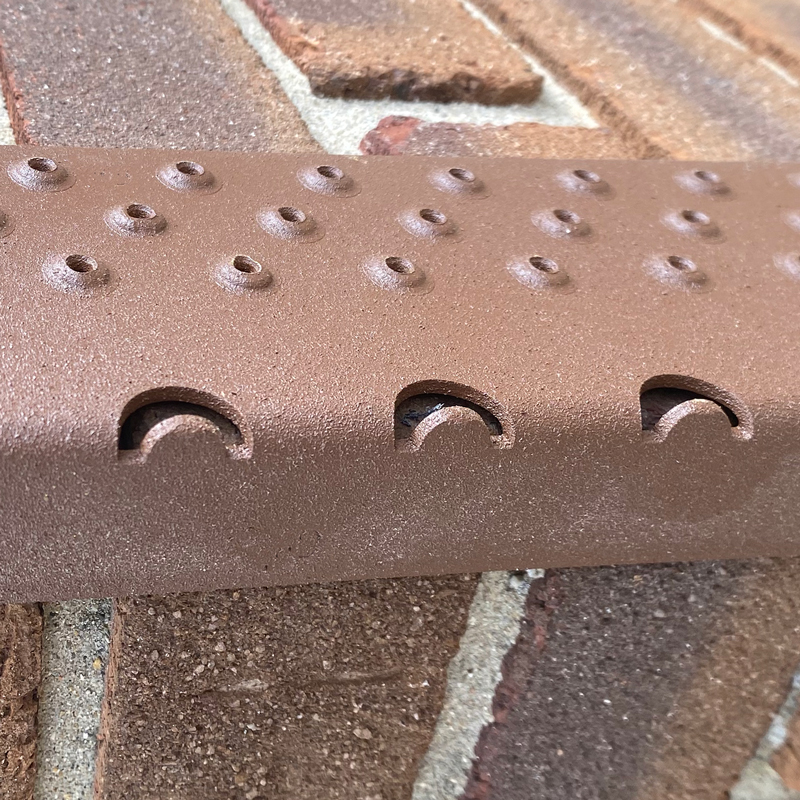
Bricks are a common construction material for outdoor staircases in homes across the United States. Brick is not only an attractive building material with its rustic texture and earthy tones, but it is also one of the most durable building materials. It’s no wonder the big bad wolf couldn’t compete with the third little pig!
The most traditional and common type of brick used in the construction of homes is made from clay and fired at high temperatures during the manufacturing process to strengthen its integrity. During the firing process, the clay particles fuse together and harden, forming the solid texture of the brick. However, the high temperatures can cause the clay particles to expand and contract, leaving behind small spaces within the brick as they cool and solidify. The natural porosity of fired bricks makes them capable of absorbing a lot of moisture from the surrounding environment and often prove to be very slippery when wet. This is also due to the presence of algae or moss, which tend to find their home right on the surface of the brick. When located in areas with diffused or limited sunlight, this environment becomes conducive for the growth of moss and algae, as they thrive without needing direct sunlight.
The fact of the matter is that your outdoor brick steps will always be at mother nature’s whim, so moisture is guaranteed to be present. Unfortunately, while we cannot control the weather, we can take a look at some of the best ways to make your brick steps less slippery, preventing future accidents from occurring.
How Can You Make Your Outdoor Brick Steps Less Slippery?
Slippery brick surfaces pose a real hazard, making it crucial to avoid potential at-home accidents. Let’s explore a few of the most popular effective and ineffective approaches to bolster the safety of your outdoor brick steps.
Power Washing

One of the most popular safety measures for ridding your outdoor brick of slippery algae, moss, and other organisms is power washing. Power washing uses high-pressure water to clear brick surfaces of debris, mud, moss, or any other slippery coating. Although this method is fairly sound in the short term, it usually does not provide a long-lasting solution. Algae and moss can grow back very quickly, sometimes within only a few days (especially if the area is damp and shaded).
Before we move on, it is worth noting that power washing can damage the brick surface of your steps or force water into any cracks, potentially worsening the slipperiness. It’s always important to exercise caution when using a power washer on your brick steps, especially if they are older. </>
Non-Slip Coatings & Sealers

The application of sealers is another widely adopted technique for ensuring the safety of smooth brick steps. Sealers that have grit, or prevent water from being absorbed in the brick can help prevent slipperiness, though it is important to avoid certain coatings that may end up doing more harm than good. Some coatings you should avoid are oil-based sealers that may not bond well with the brick– potentially leaving a hazardous residue– as well as wax or polishing compounds intended for indoor use only. Always make sure the sealers you purchase are anti-slip and water-based. Non-slip coatings will have special additives or materials that create a textured surface when dried.
Penetrating sealers are another great option as they absorb into the brick to create a barrier that repels water. Urethane coatings are also great, offering excellent durability, and creating a protective layer on the brick surface that is resistant to moisture and UV exposure.
While sealers could be a great option for preventing slipperiness on brick surfaces, they will require reapplication– especially in high-traffic areas or when the coating inevitably wears off over time. The frequency of reapplication usually depends on the type of sealer used. For example, water-based acrylic sealers generally have a shorter lifespan than solvent-based sealers or penetrating sealers and may need to be reapplied once a year. In the long run, this may cost you more time and money than it’s worth.
The effectiveness of your sealer may also depend on the condition of the underlying brick surface. If the brick is older and worn, damaged, or uneven, the sealer might not adhere properly or provide consistent results. Some sealers may also alter the appearance of the brick, potentially affecting the natural and rustic aesthetic.
Non-Slip Treads

Non-slip treads are one of the most effective methods to prevent slippage on brick surfaces. Treads provide an immediate and tactile solution for enhancing overall traction and reducing the risk of slips and falls. As far as material goes, rubber can be a decent option, however, rubber may be prone to quick wear and can become unstable and shift around if not secured properly. Rubber treads may also require more maintenance, trapping debris or moisture between the tread and the brick surface, potentially promoting mold or mildew growth. It is also important to avoid the use of rubber mats when considering what kind of treads you want to place on your brick steps.
Rubber mats alone are not a permanent solution and can easily shift around as they sit loosely on top of your steps without any security. Look for more permanent tread options that can be installed rather than simply placed on top of your steps. Unsecured mats may also deteriorate over time or bunch up, potentially creating another tripping hazard.
Metal treads are a more permanent and durable option. HandiTreads, crafted from a single piece of aluminum, do not move as rubber treads or mats tend to do. HandiTreads feature a signature raised-button surface that creates an interlocking mechanism that enhances traction and improves safety. The textured surfaces increase the overall contact area between the tread surface and your shoe sole. This greater contact helps distribute the applied force more evenly, reducing the risk of slipping while also providing friction. The design of the raised buttons on HandiTreads aluminum treads and nosings also helps channel water away from the contact area between your shoes and the tread. This water dispersion feature is especially useful in wet or rainy conditions, as it minimizes the risk of hydroplaning.
Non-Slip Nosings

Like the aluminum stair treads, HandiTreads’ stair nosings are made from aluminum and feature the same raised-button surface, providing great traction for your feet. The aluminum nosings are applied to the front edge (nosing) of your steps and do not compromise the appearance of the brick. The aluminum nosings are subtle and minimalist, allowing the character of the brick to remain prominent while ensuring safety and longevity. Because the nosings are installed onto the edge of the step, they can also help to increase the structural integrity of the stairs. This is especially helpful if your brick is older and starting to degrade a bit.
HandiTreads outdoor non-slip stair treads and nosings are highly durable and resistant to wear and tear with no maintenance required. When properly secured using the necessary concrete anchor pins, which are necessary for brick installations, HandiTreads are much more stable, significantly reducing the probability of shifting or unintended movement.
